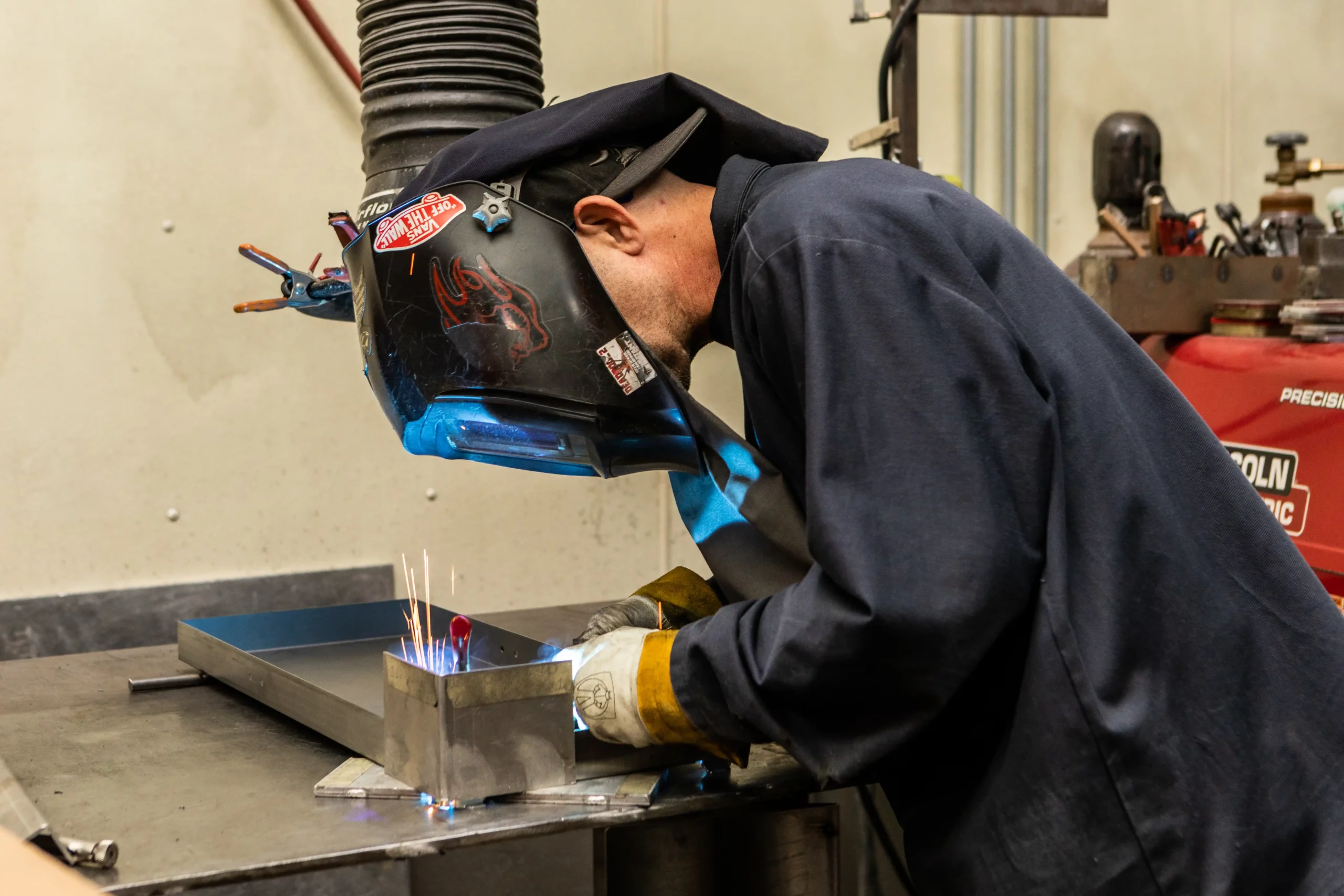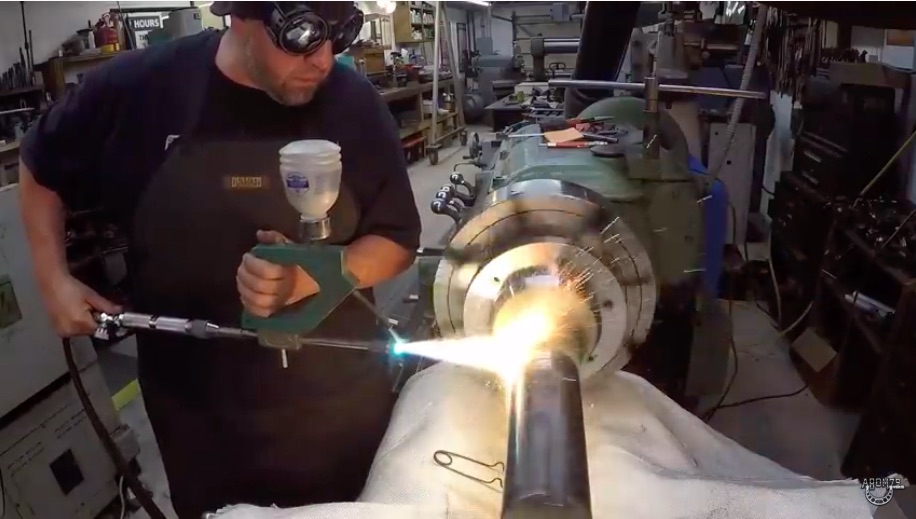Best ways to deal with warping in Montana Mobile Welding and Repair Belgrade
Wiki Article
Common Welding Repair Service Issues and Exactly How to Address Them Properly
Welding fixings usually experience a variety of concerns that can jeopardize the stability of the final product. Usual issues include insufficient infiltration, porosity, and imbalance, among others. Each defect offers special challenges that call for specific approaches for resolution. Comprehending these issues is vital for welders aiming to boost their results and skills. This conversation will discover these typical welding fixing concerns and effective methods to resolve them.Insufficient Penetration
Inadequate infiltration takes place when the weld steel falls short to completely fuse with the base material, resulting in weak joints and possible architectural failings. This issue often originates from inadequate warm input, wrong electrode angle, or improper welding rate. Welders may run into inadequate infiltration because of a mistake of the required parameters for a specific material density or type. Furthermore, contamination on the base material's surface area can hinder reliable bonding, aggravating the problem. To address inadequate infiltration, welders should guarantee appropriate settings on their devices and preserve a tidy work surface area. Regular examination of welds is suggested to recognize any type of shortages early, permitting prompt corrections and the prevention of endangered structural honesty in bonded settings up.Porosity
Porosity is a common issue in bonded joints that manifests as little gas bubbles trapped within the weld metal. This flaw can endanger the honesty of the weld, causing reduced stamina and possible failing under anxiety. Montana Mobile Welding and Repair Fabrication. Porosity generally arises from contamination, wetness, or incorrect welding methods, which enable gases to leave into the liquified weld pool. To resolve porosity, welders need to assure proper surface preparation, maintain a tidy workplace, and make use of ideal welding criteria. In addition, picking the best filler material and shielding gas can minimize gas entrapment. Routine assessment and testing of welds can help determine porosity early, ensuring timely rehabilitative actions are taken, thereby preserving the high quality and reliability of the bonded structureMisalignment
Imbalance in welding can emerge from numerous variables, including incorrect configuration and thermal growth. Recognizing the origin triggers is necessary for efficient resolution. Numerous improvement strategies are readily available to straighten components and guarantee architectural integrity.Reasons for Imbalance
Welding misalignment usually originates from a range of underlying problems that can endanger architectural stability. One main cause is incorrect fit-up of components before welding, which can bring about spaces and irregular surface areas. Variants in thermal expansion during the welding process can also result in distortion, particularly if the materials being signed up with have different coefficients of development. Furthermore, inadequate clamping and fixturing might stop working to hold components securely in position, causing movement during welding. Badly kept devices, consisting of welding equipments and devices, might present disparities in the weld grain, further contributing to imbalance. Driver mistake, stemming from inadequate training or experience, can likewise play a significant role in producing misaligned welds.
Modification Techniques Offered
Resolving misalignment effectively requires a mix of corrective methods customized to the specific concerns handy. One usual technique is the use of fixtures or jigs to hold components in the proper setting during welding, guaranteeing constant alignment. Additionally, pre-heating the materials can help lower distortion and enhance fit-up. For significant misalignment, mechanical adjustment methods, such as using hydraulic jacks or clamps, can be used to correct the setting before welding. Post-weld warmth therapy may likewise be necessary to alleviate stresses brought on by misalignment. Mindful assessment and modification during the configuration phase can protect against imbalance concerns from becoming substantial issues, promoting a smoother welding procedure and boosting total architectural honesty.Distortion
Distortion is a common challenge in welding that can emerge from different aspects, consisting of unequal cooling and heating. Comprehending the causes of distortion is essential for applying effective avoidance strategies. Addressing this issue not just improves structural stability but also enhances the overall high quality of the weld.Reasons of Distortion
When subjected to the intense warmth of welding, products typically undergo adjustments that can cause distortion. This sensation largely emerges from thermal growth and contraction throughout the welding process. As the weld area heats up, the product expands; upon air conditioning, it contracts, which can create inner tensions. In addition, uneven heating across a workpiece can exacerbate these stresses, causing bending or flexing. The type of material additionally plays a considerable role; metals with varying thermal conductivity and coefficients of expansion may respond in different ways, bring about unforeseeable distortions. Inadequate joint layout and poor fixturing can add to imbalance during welding, enhancing the likelihood of distortion. Comprehending these causes is necessary for effective welding fixing and avoidance techniques.Avoidance Techniques
Efficient prevention techniques for distortion throughout welding emphasis on controlling warm input and guaranteeing correct joint style. Maintaining a consistent warmth input aids to reduce thermal expansion and tightening, which can cause distortion. Utilizing methods such as pre-heating the workpiece can also decrease the temperature level slope, promoting consistent home heating. Furthermore, picking proper joint layouts, such as T-joints or lap joints, can enhance stability and decrease tension concentrations. Carrying out appropriate fixturing to secure the work surfaces in location better aids in keeping alignment throughout the welding procedure. Finally, staggered welding series can disperse warmth a lot more equally, stopping local distortion. By applying these methods, welders can considerably reduce the possibility of distortion and boost the total quality of their welds.Fracturing
Cracking is a common problem encountered in welding repairs, typically arising from different factors such as improper cooling rates, product selection, or poor joint preparation. he has a good point The incident of fractures can significantly compromise the stability of the weld, causing prospective failures throughout operation. To resolve this problem, welders have to initially assess the origin, making certain that products work and properly picked for the certain application. In addition, controlling the air conditioning price throughout the welding procedure is crucial; fast air conditioning can induce tension and cause breaking. Appropriate joint style and prep work also add to lessening the danger. Executing these strategies can boost weld quality and durability, ultimately minimizing the possibility of splitting in finished weldments.
Insufficient Fusion
A considerable concern in welding fixings is insufficient fusion, which occurs when the weld steel does not sufficiently bond with the base product or previous weld passes - Montana Mobile Welding and Repair Belgrade Welding. This problem can bring about weak points in the joint, potentially jeopardizing the honesty of the welded structure. Aspects adding to incomplete blend consist of insufficient warmth input, improper welding strategy, and contamination of the surfaces being joined. To address this issue properly, welders must assure proper pre-weld cleaning and surface area preparation, as well as adjust their welding parameters to accomplish ample penetration and combination. Routine examination during the welding procedure can likewise aid determine insufficient combination early, enabling timely corrective procedures to improve the overall quality of the weldOverheating
While welding fixings can enhance architectural integrity, overheating presents a significant difficulty that can lead to material degradation. Too much warmth throughout welding can alter the mechanical residential properties of metals, leading to minimized stamina, boosted brittleness, and bending. This sensation is especially crucial in high-stress applications where structural reliability is critical. Determining getting too hot can entail visual examinations for discoloration or distortion, in addition to keeping track of temperature during the welding process. To reduce the risks connected with getting too hot, welders need to employ suitable strategies, such as managing warmth input, changing traveling speed, and making use of suitable filler products. Furthermore, Get More Info implementing pre- and post-weld heat treatments can aid bring back material residential or commercial properties and improve the overall quality of the repair work, guaranteeing long-lasting performance and safety.Frequently Asked Inquiries
What Are the Common Indications of a Welding Problem?

Exactly How Can I Examine My Welds for Quality?
To evaluate welds for quality, one can use aesthetic assessments, ultrasonic screening, and radiographic techniques. Each method ensures structural stability, determines flaws, and verifies adherence helpful resources to specified requirements, ultimately enhancing the reliability of the bonded joints.What Safety and security Precautions Should I Take While Welding?
When welding, one need to focus on security by wearing ideal personal safety tools, ensuring appropriate air flow, securing combustible products away, preserving a tidy office, and recognizing surroundings to stop injuries and mishaps.Can I Repair a Weld Without Renovating the Entire Joint?
Fixing a weld without redoing the entire joint is possible, depending upon the damages (Welding). Methods such as grinding, including filler material, or utilizing a welding procedure can efficiently address details defects while preserving the bordering structureWhat Equipment Are Important for Reliable Welding Repair Works?
Crucial tools for effective welding fixings include a welding maker, cord brush, mill, protective gear, clamps, and filler products. Each device plays an essential function in making sure top quality and security throughout the repair work procedure. Porosity usually emerges from contamination, wetness, or incorrect welding strategies, which allow gases to leave into the molten weld pool. Poorly conserved devices, consisting of welding machines and tools, might present inconsistencies in the weld bead, more adding to imbalance. When subjected to the intense warm of welding, materials often undergo modifications that can lead to distortion. Cracking is an usual concern come across in welding fixings, often resulting from various aspects such as inappropriate cooling rates, material option, or poor joint preparation. A considerable issue in welding repair work is incomplete combination, which happens when the weld metal does not adequately bond with the base material or previous weld passes.Report this wiki page